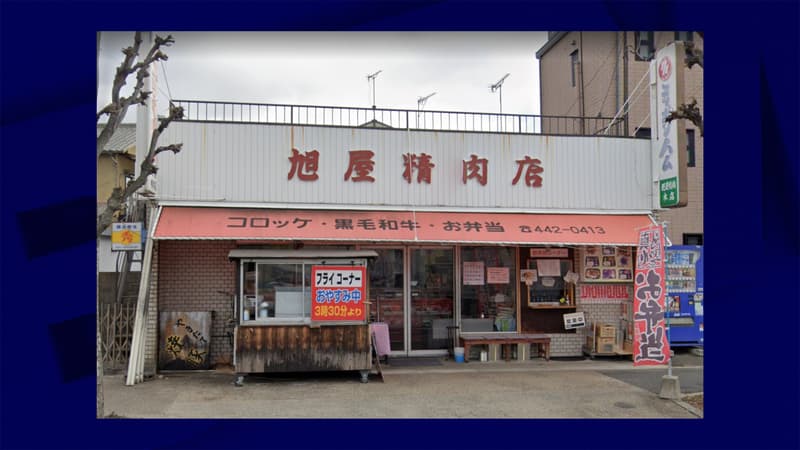Order now and be served in 30 years. This is the intriguing proposal of the Asahiya butcher shop, located in the Japanese city of Takasago. The brand serves a variety of meats, including Kobe beef, an internationally renowned product that is the pride of this southwestern region of the Japanese archipelago.
Founded in 1926, the butcher shop handed down from father to son adds battered croquettes to its menu, mixing this exceptional beef with potatoes at the end of World War II. Available in four seemingly innocuous recipes, they became wildly popular in the early 2000s with the explosion of the Internet. Hence an unprecedented wait time that continues to fuel the place’s reputation today, CNN reports.
Rush into the “extreme kibble”
The star product of the store: the “extremaduran croquette”, the one for which today you have to wait three decades after an order to be able to taste them. For customers in a bit more of a hurry, Asahiya offers “premium quality” croquettes, for which the much shorter lead time is still four years.
It was in 1999 when the butcher shop created the possibility of ordering over the Internet, a few years after the arrival of Shigeru Nitta, the current head of the business since 1994. Initially thinking that his customers would not be prepared to spend substantial sums on line, even for quality products, the butcher makes “extreme kibbles” his loss leader and decides to sell it at a loss.
“We sold the extreme croquettes at a price of 270 yen [environ 1,80€] per piece… Only the meat of these croquettes costs around 400 yen [2,80€ environ] per piece”, explains the boss.
One way, according to him, to exalt the spirit of his trade: very affordable prices for products of exceptional quality: cows -and not oxen- grade A5 (the highest possible) and potatoes from a neighboring farm. All prepared the same day and without preservatives.
Slow production to avoid bankruptcy
In order not to lose too much money from the start, Shigeru Nitta decides to produce only 200 kibbles per week. A recipe that worked quite well until the media in the region started talking about it and made the small butcher shop a real phenomenon in the early 2000s.
“We stopped selling them in 2016 because the waiting time exceeded 14 years. We thought we would stop placing orders, but we received many calls asking to continue offering them,” says the butcher.
Thus, the “extreme croquettes” return in 2017 with a massive increase in production, which goes from 200 weekly to 200 daily. The price is also increasing.
“At that time, we raised the price to around 500-540 yen ($3.40-3.70) with excise tax. But since the export of Kobe beef started, beef prices have have doubled, so the fact that we have a shortfall in kibble production hasn’t changed,” explains Shigeru Nitta.
To the point that today, the boss finds himself in a paradoxical situation: since he does not want to increase the price of “extreme croquettes”, he makes sure that the quantity of croquettes produced daily does not increase, so that the deficit can be compensated. offset by the rest of the store’s sales, which is up and running for now.
“Sorry to keep customers waiting… I want to make croquettes fast and ship them as fast as possible, but if I do, the store will be ruined,” laughs the shopkeeper.
Today we serve clients since 2012
Despite a reputation that can sometimes be difficult to manage, especially when you have to make sure that customers deliver years after they ordered (today’s customers ordered about ten years ago), the boss says he is above all grateful. .
“By becoming famous, I think I can help the whole industry, not just my store, by getting people who weren’t interested in Kobe beef interested in it. I want as many people as possible to eat Kobe beef.” , and not just in my store,” he said.
Today, the 58-year-old butcher is thinking of expanding his business, while he already has another store in the city of Kobe. He also wants to continue selling his croquettes, available only in Japan and sold frozen in trays of five for €18.50 each.
Source: BFM TV


